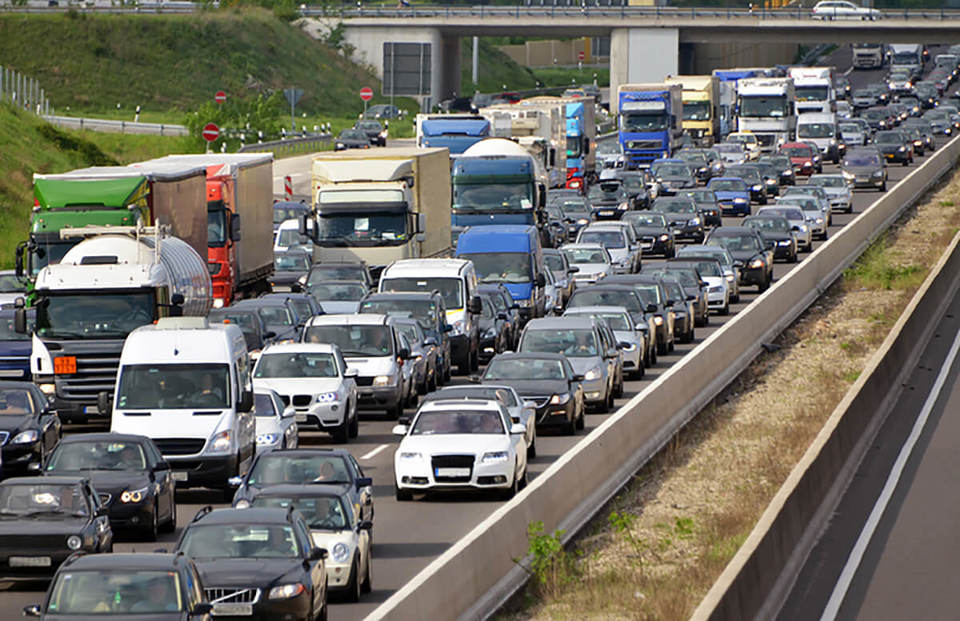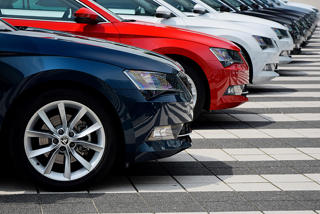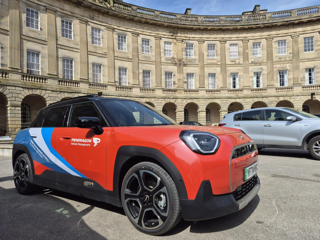The amount of cash collected by the Treasury in company car tax has increased by more than 24% year-on-year – some £360 million – yet the number of employees receiving the benefit fell by 20,000 over the same period, newly-released data shows.
The provisional figures, from HMRC, highlight how the Government is raising record revenues from the company car market by imposing higher taxes on drivers.
The data shows that there were 940,000 employees paying benefit-in-kind (BIK) tax on a company car in 2016/17 – a 2% fall on the 960,000 recorded the previous financial year.
National insurance up
The amount of national insurance contributions (NICs) paid by employers on company cars also increased. Employers paid £630m in 2016/17, compared to £600m the previous year – up 5%.
BIK tax and NICs were collectively worth £2.48 billion to the Treasury, compared to £2.09bn in 2015/16 – an increase of 19% or £390m.
Compare that to 2012/13, when BIK and NICs were worth £1.75bn to the Treasury – some £730m less – yet the number of employees with a company car was exactly the same at 940,000.
The record figure of £2.48bn means that the average annual tax yield on a company car was £2,638 in 2016/17, compared to £2,166 in 2015/16, a 22% or £472 year-on-year increase.
At the start of the decade (2009/10), a company car was worth, on average, £1,680 in BIK and NICs revenues to the Treasury, some £1.63bn (£850m less).
The higher tax take between 2015/16 and 2016/17 can, in part, be explained by the increase reported in the taxable value over the same period.
The taxable value of the company car benefit was worth £4.57bn, up from £4.32bn the previous year, according to HMRC figures.
However, the vast majority on the revenue increase has been down to the annual two percentage point increase in BIK rates, first introduced in 2015-16 (in previous years there had typically been a one percentage point increase).
Furthermore, these higher incremental increases in BIK would have been decided in combination with the removal of the three percentage point diesel supplement, which was announced in the 2012 Budget and expected to take effect from April 2016.
However, shortly before it was due to be axed, the then Chancellor, George Osborne, announced he was delaying its removal until 2021 “in light of the slower-than-expected introduction of more rigorous EU emissions testing” (fleetnews.co.uk, November 25, 2015).
Two years later, current Chancellor, Philip Hammond, announced he was raising it to 4% from April this year (fleetnews.co.uk, November 22, 2017).
Analysis of HMRC data for 2016/17, when the diesel supplement should have been removed, shows that the annual average company car tax paid by drivers was £1,968 (£164 per month). That was 27% higher than the £1,552 (£129 per month) paid in 2015/16.
Even the fact that company car drivers are choosing cars with lower CO2 values has failed to thwart the increase in revenues.
In 2015/16, the last year for which figures are available from HMRC, 83% of company cars emitted 134g/km of CO2 or less, an increase from 77% of cars in 2014-15.
There is an established strong reducing trend in the level of emissions. In 2002-03, 58% of company cars had emission values in excess of 165g/km; in 2015-16 this had reduced to just 3%.
The emission-dependent scale of appropriate percentages for company cars is one of many factors incentivising the manufacture and purchase of low emission vehicles, says HMRC.
WLTP impact on CO2
The impact of the new emissions testing regime suggests Treasury coffers could be swollen even further.
All cars are being transitioned to the WLTP (Worldwide harmonised Light vehicle Test Procedure), with newly type-approved models subject to the test since last September, while all other new cars must be rehomologated by this September.
WLTP replaced NEDC (New European Drive Cycle), which had been criticised for failing to represent real-world fuel consumption.
Industry analysts are predicting CO2 figures derived from the more stringent test could be up to 30% higher than those produced under the old regime.
These figures will not apply to first-year vehicle excise duty (VED) and company car tax until April 2020, while the Government has promised to reveal how it will help fleets mitigate the expected increase in November’s Budget.
For example, the Mercedes-Benz E 220d saloon AMG Line that Fleet News has on test has increased by three BIK tax bands since delivery, with CO2 emissions rising from 112g/km to 127g/km. A 40% taxpayer will pay an additional £478 per year, with a business paying £165 more in NICs.
Fuel duty increase
The fleet industry has also been subjected to a volatile fuel market, while seeing company car tax revenues rise.
Fuel duty has not risen since January 2011, when it was increased from 58.19p per litre to 58.95p per litre. It was cut by 1p per litre in the Budget two months later, and has been frozen since.
However, while the freeze has cost the Treasury approximately £7bn in lost tax revenue, pump price volatility has still seen fuel duty yields increase year-on-year.
The Government received £26.6bn in fuel duty in 2012/13, increasing by £300m each year for the next two years before reaching £27.6bn in 2015/17. The latest figures available, for 2016/17, show revenues increased again year-on-year to £27.9bn.
Fuel duty receipts could increase further still, with reports suggesting that the Government is considering ending the fuel duty freeze.
In terms of fuel type, 81% of company cars in 2015/16 used diesel, with 19% using other fuel types, predominantly petrol. In 2002-03 only 33% of company cars used diesel.
The fuel type figures HMRC publishes next year, for 2016/17, are expected to show a shift away from diesel in the wake of the VW Group emissions scandal and mounting concerns over air quality.
Meanwhile, company cars powered solely by electricity were reported by 2,500 individuals in 2015-16. A provisional estimate for the number pure EV company car drivers in 2016-17 is 3,100.
‘Free’ fuel numbers down
Drivers receiving excess mileage allowances and ‘free’ fuel has again declined, according to HMRC data.
An excess mileage allowance is a payment which exceeds the approved mileage allowance payment (AMAP) rate for staff reclaiming business mileage in their own cars, the so-called grey fleet.
The number of recipients of taxable excess mileage allowance payments held steady until 2009/10, with a slight fall in 2010/11 from 550,000 to 510,000 and then a much larger fall (to 380,000) in 2011/12.
The numbers receiving a mileage allowance in excess of the approved rate reduced in 2011/12, following an increase in the rate that year.
The number of recipients has continued to decrease, falling to 210,000 in 2015/16. The last year when figures are available for, 2016/17, shows a new low of 180,000.
Since 2007/08, the taxable value has also fallen steadily from £200m to £50m in 2016/17. This will have been partly down to the public sector revising its rates to bring them in line with what is accepted by HMRC.
However, separate research conducted by Fleet News last year, showed that one in three councils paid employees who drive their own car for work above AMAP rates in 2016-17 (fleetnews.co.uk, November 14, 2017).
The number of employees receiving ‘free’ fuel has also fallen, with 160,000 employees receiving the benefit in 2016/17; 20,000 fewer than the previous financial year. HMRC says that the reduction in car fuel benefit is likely to reflect rising fuel prices.
























Nigel Boyle - 17/07/2018 10:05
The year on year increases in BIK is something the Government needs to stop doing. The car I drove last year costs no more to run this year, yet they charge me more. The argument is flored, if they want to increase renenue from me they should increase the rate of income tax so everyone can see it. This is a back door taxation that is very close to backfiring. There has been much WLTP talk in this magazine, I will not repeat that, save it to save the Government is using it for more backdoor taxation. The tipping point is close, it will not stop poeple driving, it will stop them have company cars and the Goverment revenue to dramatically fall.